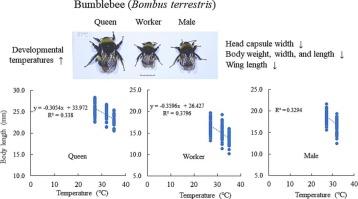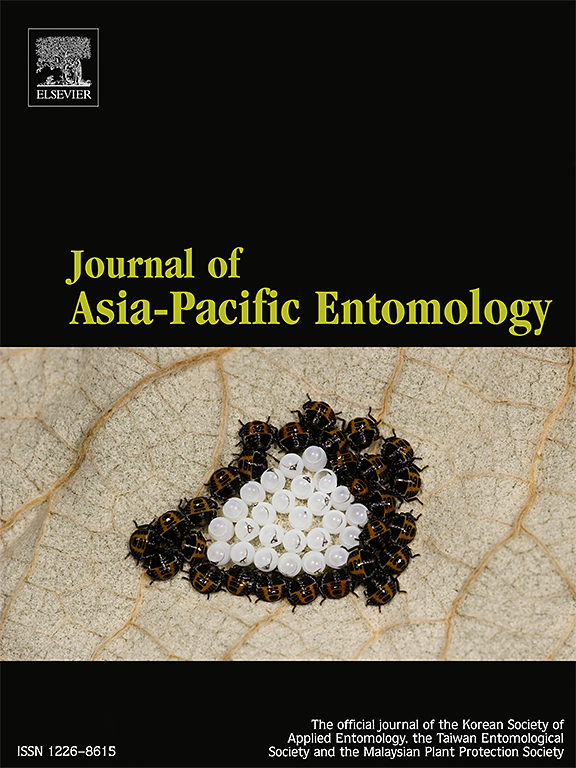发育温度升高与不同种群熊蜂形态特征之间的负相关关系
IF 1.3
3区 农林科学
Q3 ENTOMOLOGY
引用次数: 0
摘要
气候变化会对熊蜂的形态和行为产生负面影响。特别是,气候变化会缩小工蜂的体型,从而减少觅食活动。然而,人们对较高的发育温度对不同种群熊蜂形态的影响仍然了解不足。在这项研究中,我们调查了发育温度升高对熊蜂不同种群形态特征的影响。我们在不同的发育温度下饲养了从冬眠中苏醒的蜂王:最佳温度(恒温27 °C)、中度高温(恒温32 °C)和高温(35 °C;在10只工蜂苏醒后将蜂群从32 °C转移到35 °C)。不同种群熊蜂的体重、头囊宽度、体宽、体长和翅长在发育温度升高时有显著差异。影响最大的是工蜂的体宽和体重、蜂王的体宽和翅长以及雄蜂的体长、头囊宽和翅长。在不同种群的熊蜂中,工蜂受发育温度升高的影响最大,其次是蜂王,然后是雄蜂。相比之下,翅长与体长的相对比例表明,在发育温度升高的情况下,熊蜂种群的翅长会发生异变。这些发现表明,气候变化导致的发育温度升高可能会对熊蜂不同种群的形态特征产生负面影响。本文章由计算机程序翻译,如有差异,请以英文原文为准。

Negative relationships between elevated developmental temperatures and morphological traits of different castes of bumblebees (Bombus terrestris)
Climate change can negatively impact the morphology and behavior of bumblebees. In particular, it can decrease the body size of workers, thereby reducing foraging activity. However, the morphological impacts of higher developmental temperatures on different castes of bumblebees remain insufficiently understood. In this study, we investigated the effects of elevated developmental temperatures on the morphological traits of different castes of bumblebees (Bombus terrestris). We reared queens that emerged from hibernation at different developmental temperatures: optimal (constant temperature of 27 °C), moderately high (constant temperature of 32 °C), and high (35 °C; by transferring the colony from 32 °C to 35 °C after the emergence of 10 workers). The body weight, head capsule width, body width, body length, and wing length of different castes of bumblebees significantly differed at elevated developmental temperatures. The highest impact was noted on the body width and body weight of workers, body width and wing length of queens, and body length, head capsule width, and wing length of males. Among the different castes of bumblebees, workers were most impacted by elevated developmental temperatures, followed by queens and then males. In contrast, the relative ratio of wing length to body length suggested the allometry of wing length in bumblebee castes at elevated developmental temperatures. These findings indicate that elevated developmental temperatures resulting from climate change may negatively affect the morphological traits of different castes of bumblebees.
求助全文
通过发布文献求助,成功后即可免费获取论文全文。
去求助
来源期刊

Journal of Asia-pacific Entomology
Agricultural and Biological Sciences-Insect Science
CiteScore
2.70
自引率
6.70%
发文量
152
审稿时长
69 days
期刊介绍:
The journal publishes original research papers, review articles and short communications in the basic and applied area concerning insects, mites or other arthropods and nematodes of economic importance in agriculture, forestry, industry, human and animal health, and natural resource and environment management, and is the official journal of the Korean Society of Applied Entomology and the Taiwan Entomological Society.
 求助内容:
求助内容: 应助结果提醒方式:
应助结果提醒方式:


